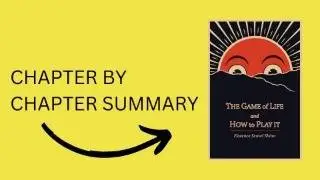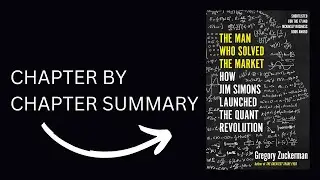The Man Who Solved The Market Book Summary
I love coffee! Please support my channel with a $5 contribution by buying me a coffee: https://buymeacoffee.com/eneskaraboga The Man Who Solved the Market' by Gregory Zuckerman tells the story of Jim Simons, a mathematician who changed finance with his firm, Renaissance Technologies. This book tracks his shift from academia to launching one of the most successful hedge funds ever. It highlights his use of mathematical models to predict market trends.
Chapter 1: Jim Simons starts as a teenager at a garden supply store, where his love for mathematics begins to take shape against the backdrop of mundane work, setting the stage for his future.
Chapter 2: At MIT and the Institute for Defense Analyses, Simons hones his skills in pattern recognition and data analysis, essential for his later financial algorithms.
Chapter 3: Transitioning from academia, Simons makes early trading attempts, learning from the market's feedback and beginning to see the potential for mathematical models in trading.
Chapter 4: Simons establishes Renaissance Technologies, facing initial skepticism as he blends scientific methods with financial trading.
Chapter 5: The Medallion Fund finds success under Simons' leadership, with breakthroughs in data analysis and algorithm refinement, overcoming early challenges.
Chapter 6: Renaissance's success reshapes the financial industry, influencing the rise of quantitative, model-driven trading strategies.
Chapter 7: Personal and professional challenges mark this period for Simons, impacting his life and work at Renaissance Technologies.
Chapter 8: As the firm grows, it encounters ethical and operational challenges, including conflicts within and debates about high-frequency trading.
Chapter 9: Simons prepares for retirement, focusing on maintaining Renaissance's edge through technological and strategic innovations.
Chapter 10: The global financial crisis tests Renaissance's robust trading strategies, highlighting the firm's adaptability.
Chapter 11: Renaissance continues to innovate its trading strategies to stay competitive, constantly refining its algorithms.
Chapter 12: Simons' impact extends beyond finance to philanthropy in scientific research and education, influencing multiple fields.
Chapter 13: Advances in technology pose new regulatory and operational challenges for Renaissance, which it navigates with continued innovation.
Chapter 14: The book concludes by speculating on the future of trading, considering the long-term implications of Simons' work and the ethical, technological, and financial challenges ahead.



















